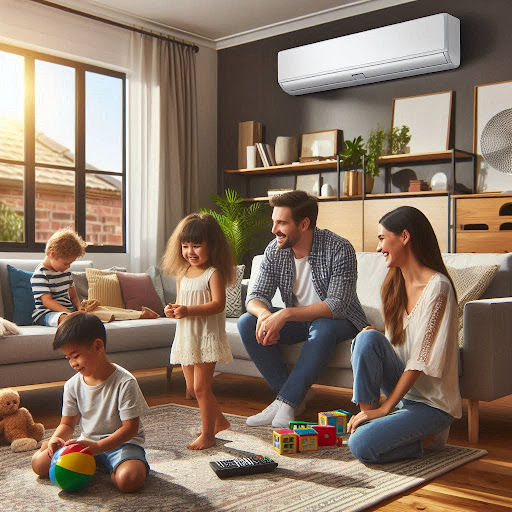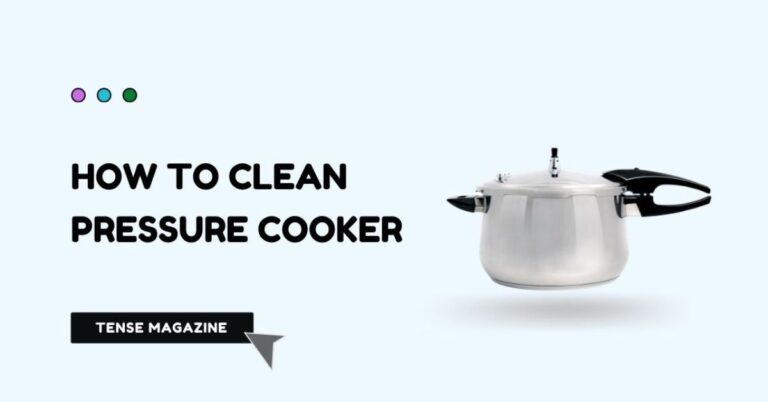Your Complete Air Conditioner Sizing Guide

It’s easy to believe that “bigger is better,” or selecting the largest or best-rated air conditioner isn’t the only way to choose the appropriate size. The goal is to find the ideal fit for your house so that you can maintain your comfort level without paying excessive energy costs.
This simple guide will explain all you need to know about air conditioner sizing, regardless of whether you’re upgrading from an outdated system or installing an AC for the first time. We’ll keep it straightforward and free of jargon, so don’t worry.
An added bonus is that you might qualify for an air conditioner rebate if you select an energy-efficient model that fits your space, which would help you save even more money up front!
Table of Contents
- Why Air Conditioner Size Matters
- How Air Conditioner Sizing Works (in Simple Terms)
- Quick Room Size to AC Size Estimate
- Factors That Affect the Size You Need
- What About Multi-Room or Whole-House Cooling?
- Why Professional Sizing Matters
- Save Money with Rebates for Energy-Efficient ACs
- Final Checklist: Choosing the Right AC Size
- In Summary: Sizing = Comfort + Savings
Why Air Conditioner Size Matters
“To save money, I’ll just get a smaller, less expensive one.” However, that is among the most common errors made by homeowners.
When the size is incorrect, the following occurs:
Too Little?
It will have trouble heating or cooling your room. It will operate continuously, consuming more energy, increasing your expenses, and wearing out more quickly.
Too Large?
It won’t adequately remove humidity and will cool the area too quickly. This results in short cycling, or the unit repeatedly turning on and off, which raises electricity costs and creates uneven temperatures.
Is That Correct?
Your air conditioner saves you money on energy costs and ongoing maintenance, maintains a constant temperature, lowers humidity, and operates efficiently. Remember: If you’re upgrading to a properly sized, energy-efficient system, you may also qualify for the Air Conditioner Rebate Victoria program. It’s a win-win for your home and your wallet!
How Air Conditioner Sizing Works (in Simple Terms)
Kilowatts (kW) are used to measure the power of air conditioners. The system’s power increases with the kilowatt.
However, what is the actual number of kilowatts required?
It is dependent upon:
- The size of the house or room
- The height of the ceiling
- The number of windows and doors
- The quality of the insulation
- Whether the room faces north or west (more sun means more cooling is required).
Quick Room Size to AC Size Estimate
Here’s a basic sizing chart for a standard room with average insulation and ceiling height:
| Room Size (sq. metres) | Recommended AC Size (kW) |
| Up to 20 m² | 2.0 – 2.5 kW |
| 20 – 30 m² | 2.5 – 3.5 kW |
| 30 – 45 m² | 4.0 – 5.0 kW |
| 45 – 65 m² | 5.0 – 7.0 kW |
| Over 65 m² | 7.0 – 9.0+ kW |
Note: This is a general guide. A proper in-home assessment is always recommended.
Factors That Affect the Size You Need
There is more to selecting the ideal air conditioner than square meters. The amount of power your air conditioner will require to function correctly depends on a number of other significant factors.
To help you make a better choice, let’s take a closer look at each factor:
1. Room Size
This is where all air conditioner sizing begins.
Your air conditioner must work harder to cool (or warm in winter) a larger space.
To determine the size:
Calculate the room’s length by width.
To find the area in square meters (m2), multiply them.
A room that is 5 m × 4 m = 20 m² is one example. Normally, that would require about 2.5 kW of AC.
Pro Tip: A room with high ceilings has more volume. If so, you might require a slightly larger unit than what the chart indicates.
2. Windows & Glass
The amount of heat that enters your house is greatly influenced by your windows.
Large glass windows can rapidly heat up your room, much like a greenhouse, especially if they face the sun.
Particularly during the summer, heat can still enter through windows that are tightly sealed.
If your space has large windows
Windows that are not shaded
If your glass is thin or old, you’ll likely need a stronger air conditioner than what the standard size indicates.
Pro Tip: You can lower heat and increase AC efficiency by using window films, blinds, or curtains.
3. Sunlight & Room Direction
How hot your room gets during the day depends on which way it faces.
Rooms facing north and west receive the most sunlight, particularly during the afternoon. They stay hotter for longer after warming up quickly.
Rooms that face south and east typically receive less direct sunlight and remain cooler, so they might require less cooling power.
Pro Tip: Use a compass app or just watch when sunlight enters the room during the day if you’re unsure of the sun’s direction.
4. Insulation & Building Type
Insulation is like a thermos for your house. It helps keep the cool in during summer and the warmth in during winter.
If your home is:
Well-insulated (in the ceiling, walls, and floors), your AC won’t have to work as hard.
Poorly insulated or an older home with thin walls, your AC will need more power to maintain a comfortable temperature.
Pro Tip: Insulation upgrades might cost upfront, but they reduce long-term heating and cooling costs, and may also qualify for rebates in Victoria.
5. People in the Room
The more people in a room, the warmer it gets because people emit body heat.
One or two people’s bedrooms or home offices can be easily sized.
Stronger air conditioners are required to manage the increased heat load in living rooms, lounges, or open-plan spaces with lots of people, particularly during parties or family get-togethers.
Pro Tip: Consider how the space is used on a daily basis. Compared to a busy family room or a children’s play area, a quiet study may require less electricity.
6. Appliances and Heat-Producing Equipment
Heat from appliances such as stoves, ovens, TVs, computers, and lights can quickly accumulate.
This is particularly crucial in: Kitchens
Media rooms or home theaters
Work-from-home or gaming arrangements
Your AC system will require more power to handle the heat produced by the numerous electronics in your room or by the frequent cooking you do.
Pro Tip: Avoid placing hot items near the AC sensor. The AC might run longer than necessary if the sensor is close to a heat source.
What About Multi-Room or Whole-House Cooling?
There are two primary options if you wish to cool a few rooms or your entire house:
Systems with Multiple Splits:
Multiple indoor units are connected to a single outdoor unit.
Perfect for two to four rooms with varying temperature requirements
Systems with Ducts
Each room has vents on a single central system.
Ideal for open-plan homes or full-house air conditioning
In these situations, sizing is determined by adding the overall area of all the rooms to other variables like layout, duct length, and ceiling height.
Advice: Always have a professional determine the ducted system’s size. There is no one-size-fits-all solution.
Why Professional Sizing Matters
Online calculators can be used to estimate the size of your air conditioner, but expert installers:
- Take precise measurements of your area.
- Take into account the local climate, insulation, and sun exposure.
- Suggest systems that qualify for government rebates like the air conditioner rebate and that’s where Ecoorigin can help you claim it right.
Save Money with Rebates for Energy-Efficient ACs
If you reside in Victoria, you may be eligible for rebates under the Victorian Energy Upgrades (VEU) program if you upgrade to an appropriately sized energy-efficient air conditioning system.
You might qualify for:
- When replacing an outdated gas system, a Victorian energy rebate
- A rebate for air conditioners Victoria, if you select a recognized, effective model
- Your initial outlay may be lowered by hundreds of dollars or more thanks to these rebates.
Verify that your selected unit is on the approved list and that your installer has VEU accreditation. In this manner, the rebate is typically applied to your quote automatically.
Final Checklist: Choosing the Right AC Size
Before you buy, go through this simple checklist:
- Measure your room(s)
- Check window size and sun exposure
- Think about how often the room is used
- Consider how many people use the space
- Think long-term: Heating, cooling, and running costs
- Ask your installer about rebates and energy ratings
In Summary: Sizing = Comfort + Savings
Getting the air conditioner size right means:
- Lower energy bills
- Better comfort year-round
- A longer-lasting unit
- Access to rebates like the Victorian energy rebate
Don’t just guess. A few minutes of planning (or a quick consultation) can save you a lot in the long run.






